News
DIY: Installing rear door sensors in my Maruti Alto K10
Since the wiring exists, the project is straight forward. Order the part, open the body panels, install the switch, connect the wiring, put panels back and test.
BHPian Reinhard recently shared this with other enthusiasts.
Recently completed a useful & very easy mod in the Alto K10 (last generation). Documenting it for reference as usual.
Why?
- I hate missing items / dummies for utility or safety components. Especially the ones that directly read as "CHEAP".
- The last gen Alto-K10 and I believe the Alto-800 also - do not have the rear door position sensor switch in the body frame - in some variants!
- Even in the TeamBHP Official Alto K10 pictures - it can be seen that the AMT car has dummies Exhibit-A while the MT one has door sensor switches Exhibit-B. I mean really Maruti...Charging us a nice premium for AMT variant and giving unpainted mirrors, door handles and removing Rs 95 switches!
- That someone at MSIL actually went on to design & order this specific cap of no other use - is depressing.
- This means - the cabin roof light is linked only to the front 2 doors! And doesn't turn ON when any of the rear doors is opened.
- Not only is it inconvenient - it is a safety issue also. There is no way to know if the rear door is properly closed or not since there is no indication. I don't know if this is done on purpose to link with how the AMT behaves in case of door-open scenario etc - but sure doesn't make sense regardless. Seems like cost cutting to me.
- Now to the keen eye & ear - it is possible to notice that the door didn't close properly by sound OR by seeing the crooked edges in the ORVM. But is that best as a standard operating procedure? And should the missus (the car belongs to her) have this added stress to check?
- So I needed this connection to be made and the switch to be installed, in place of the stupid Rs 2.00 cap provided by MSIL.
How?
- Thankfully though, MSIL seems to have shared the side harness in across variants.
- Meaning - the pig-tail and connector for the rear door sensor switch is existing! (Further shocking that still Maruti decided to save a total of INR 190 in cars that cost over 5 lakhs OTR.)
- Of course - before you try to implement this project as it is - do first check that the wiring pig-tail & connector exists in your car. If not - this will need some more custom wiring to be done. I started off thinking I'll need to do the wiring. Was surprised to see the connector tucked away inside the body panels. Well - happy that some effort was saved.
- Since the wiring exists, the project is straight forward. Order the part, open the body panels, install the switch, connect the wiring, put panels back & test!
The Car -This mod will be suitable for the Alto-K10 of the below generation OR the Alto-800 based on this same chassis but with different face. At least on the VXi trims that come with company provided central locking. I don't know whether the required pig-tail will be present in lower trims. Depends on how Maruti decided to share parts.

The Product:
Ordered 2x Door switches from the MSIL part-bin on Boodmo.com.
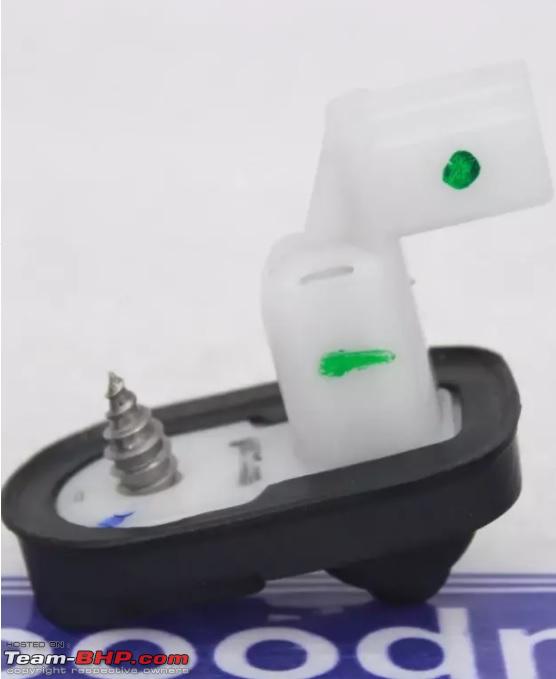
The Implementation:
Explaining the steps on RHS. Replicate for LHS the same way.
Open the rear doors & you'll be greeted by this dummy cap near the latch mechanism. Use a plastic spatula or trim removal tool to gently push it from the side & remove.
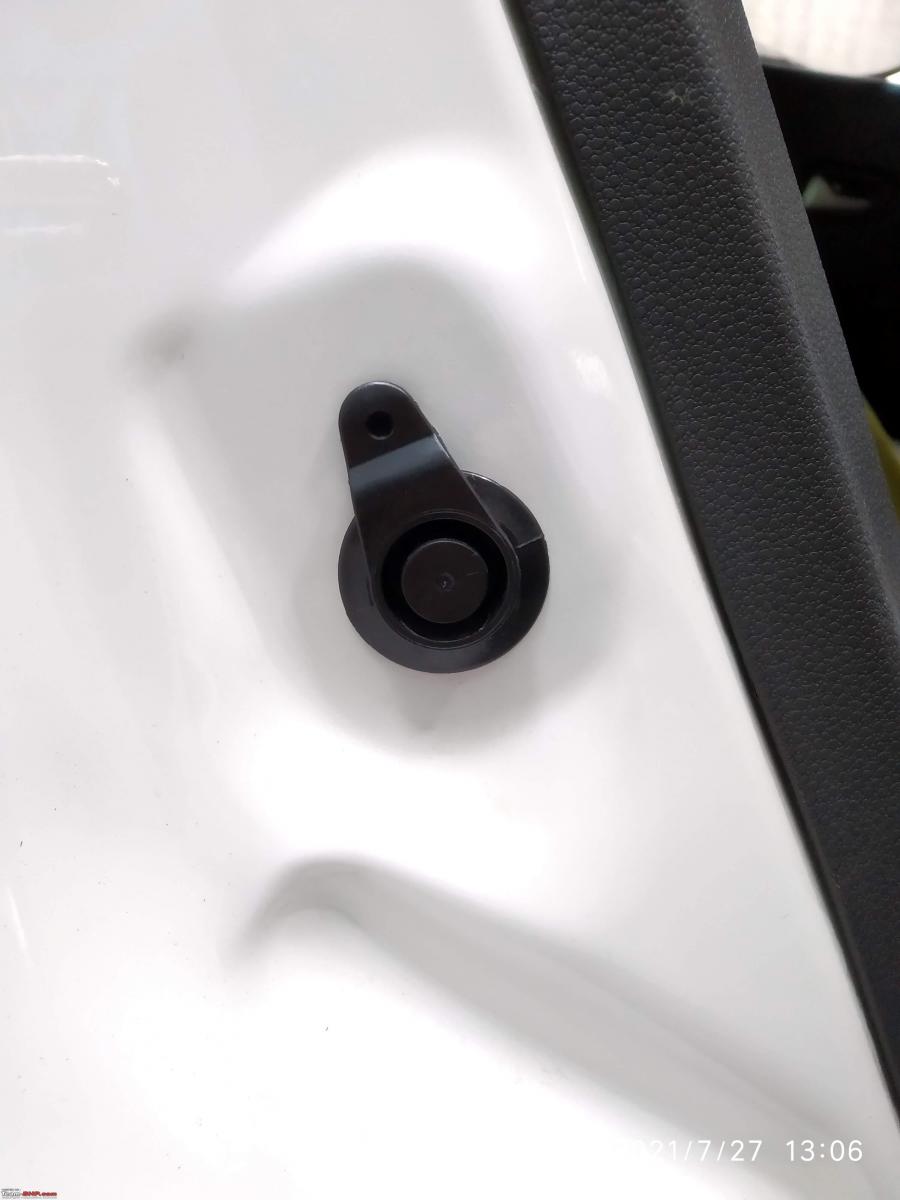
Once removed - you'll notice how MSIL is saving every possible penny in car design. Commendable. There is a simple small punch-hole in the metal - a self-threading screw will make room for itself in this. No threading / no welded nut here.

Now remove the plastic trim covering the lower edge of the footwell first. Use gentle force with plastic trim remover tools. Its installed with delicate clips. They tend to break if forced.
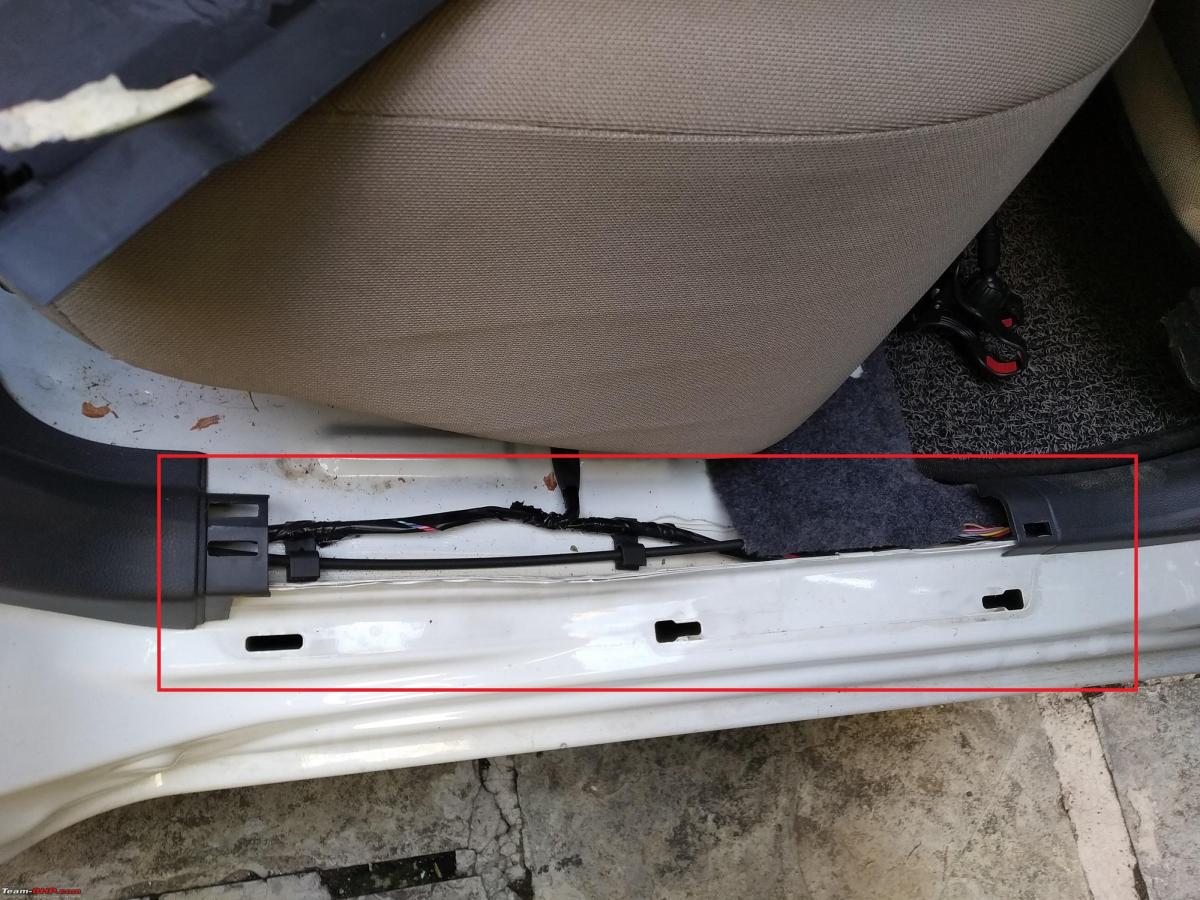
Now fold the seat-back forward to get working room around the lower C pillar where we need to locate the wiring inside body-trim panels.
Gently push/leverage out the grey body trim towards the inside of the cabin to expose the cavity inside. Apply gentle force along the direction as shown by the red arrows. Be careful not to bend / break it. Once deformed - it will not come back to shape. The top U shaped edge of it - needs to be pulled forward (towards front seat) for easy removal.
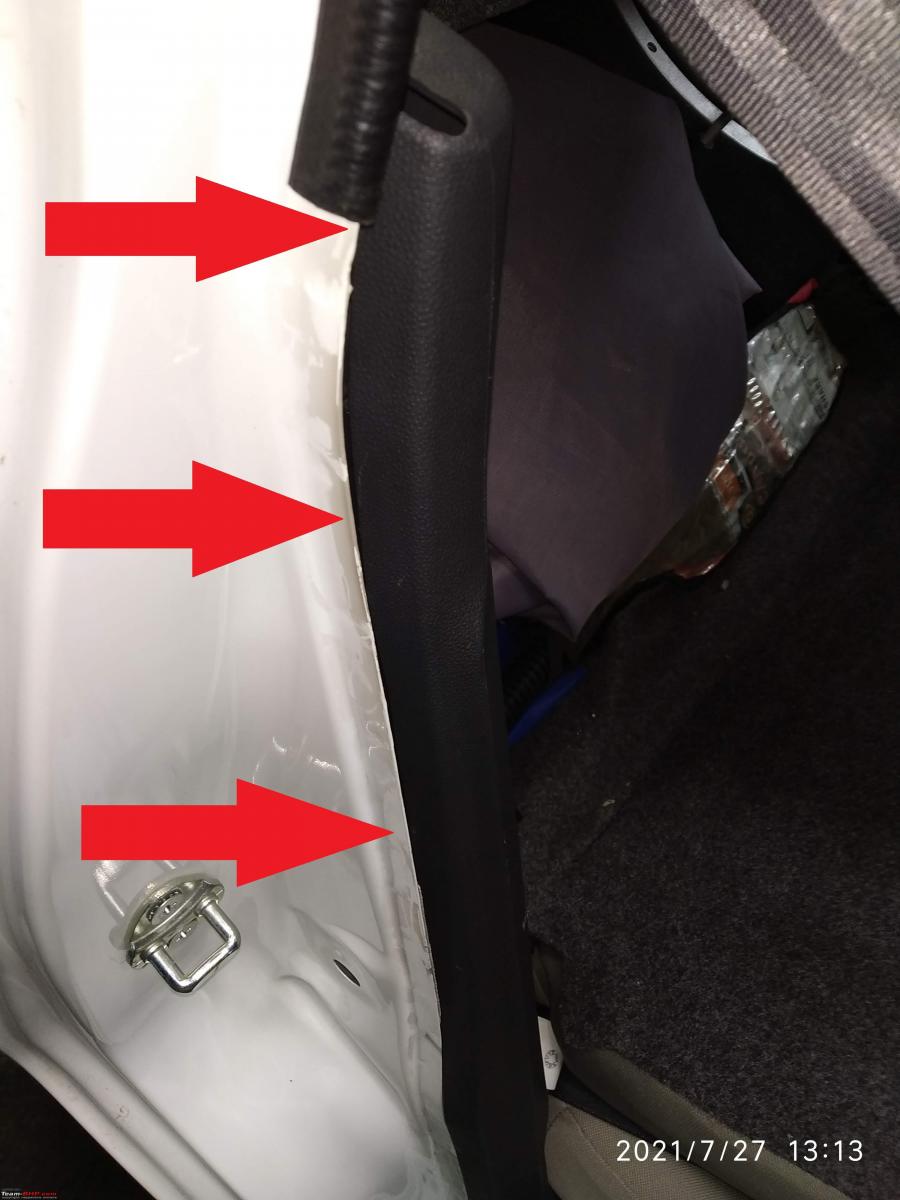
Now gently push it towards the inside of the cabin and take a peek. You'll see a white coupler tucked away and taped to rest of the wiring. On RHS you'll also see the black tube that carries the steel wire to open the boot lid. Red box is the coupler we are looking for. Blue box marks the white tape by which this pig-tail is secured with the main harness. Yellow box marks the hole in the body from where we want to connect this coupler with our newly acquired switches.
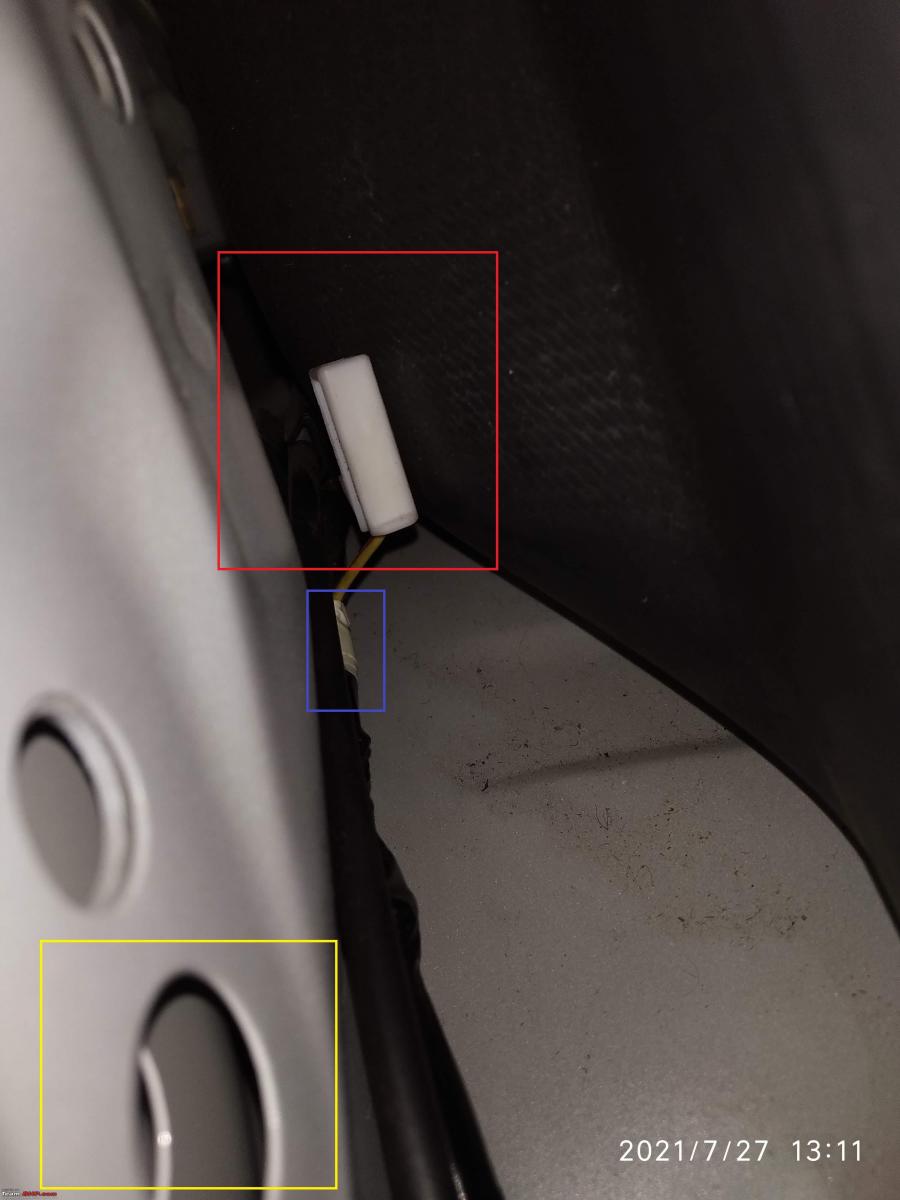
Carefully with a blade / paper-cutter, make a slice in the white tape OR remove it by bare hands if you can safely reach it. Take care not to break / tear any of the actual wires. No - I have not cut the seat - its just an illusion in the image!
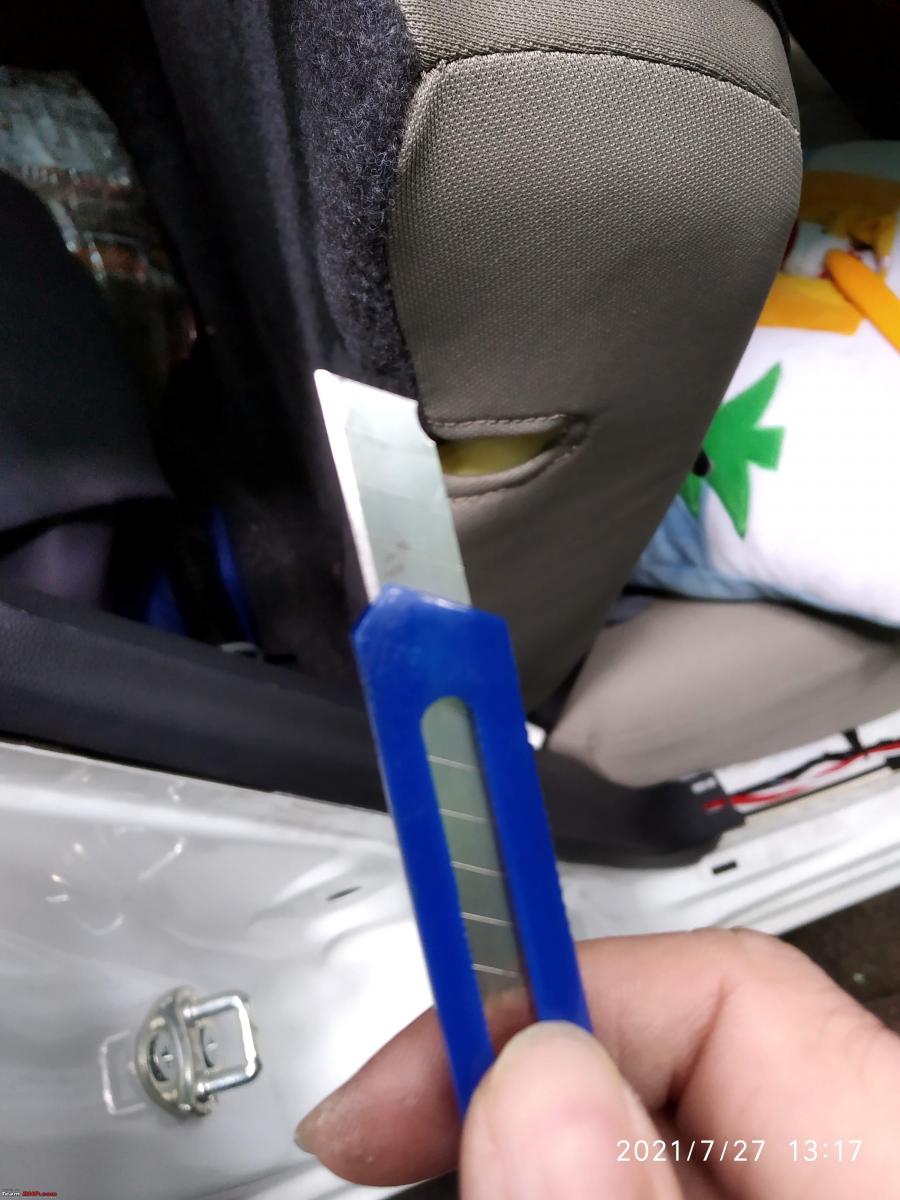
Now bring the wire & coupler towards the hole in the body & push it outwards through it - from where we removed the cap in earlier step.
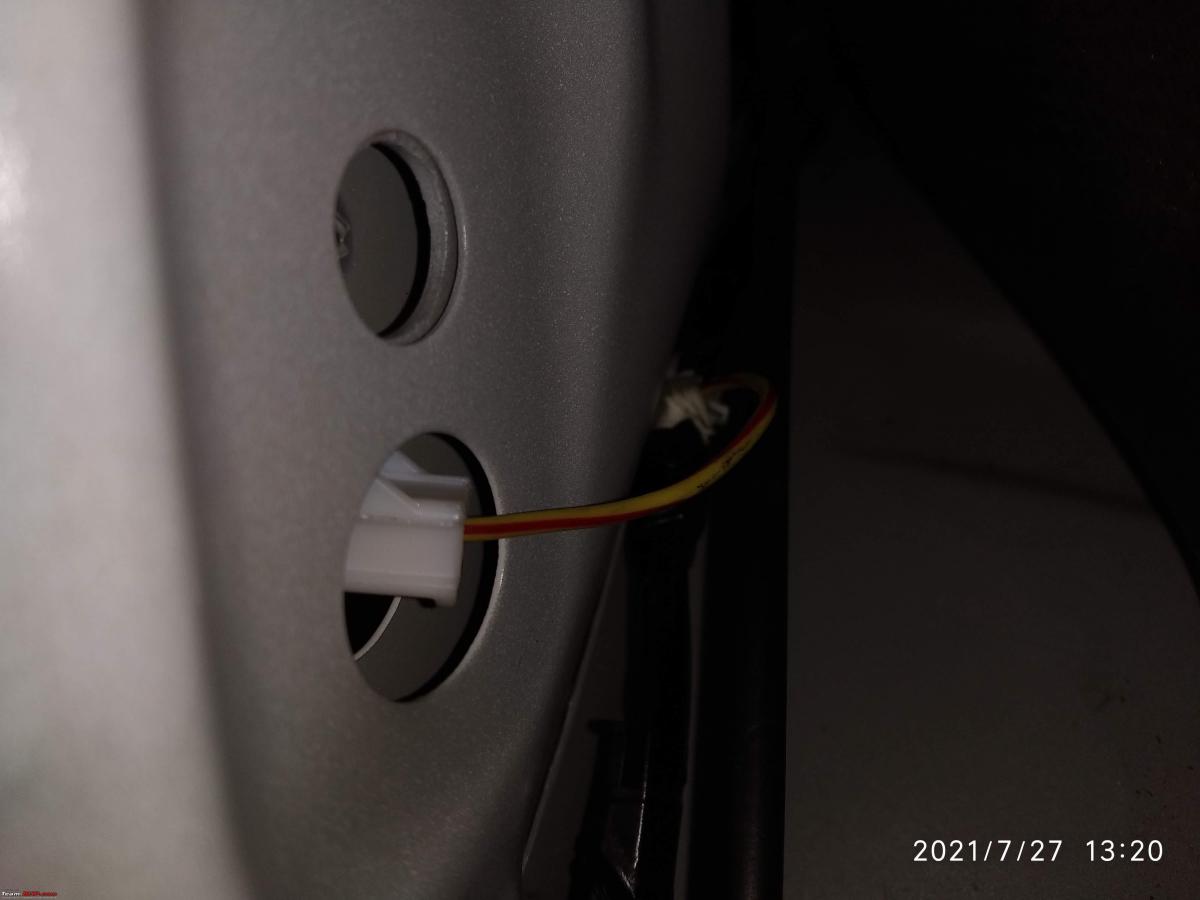
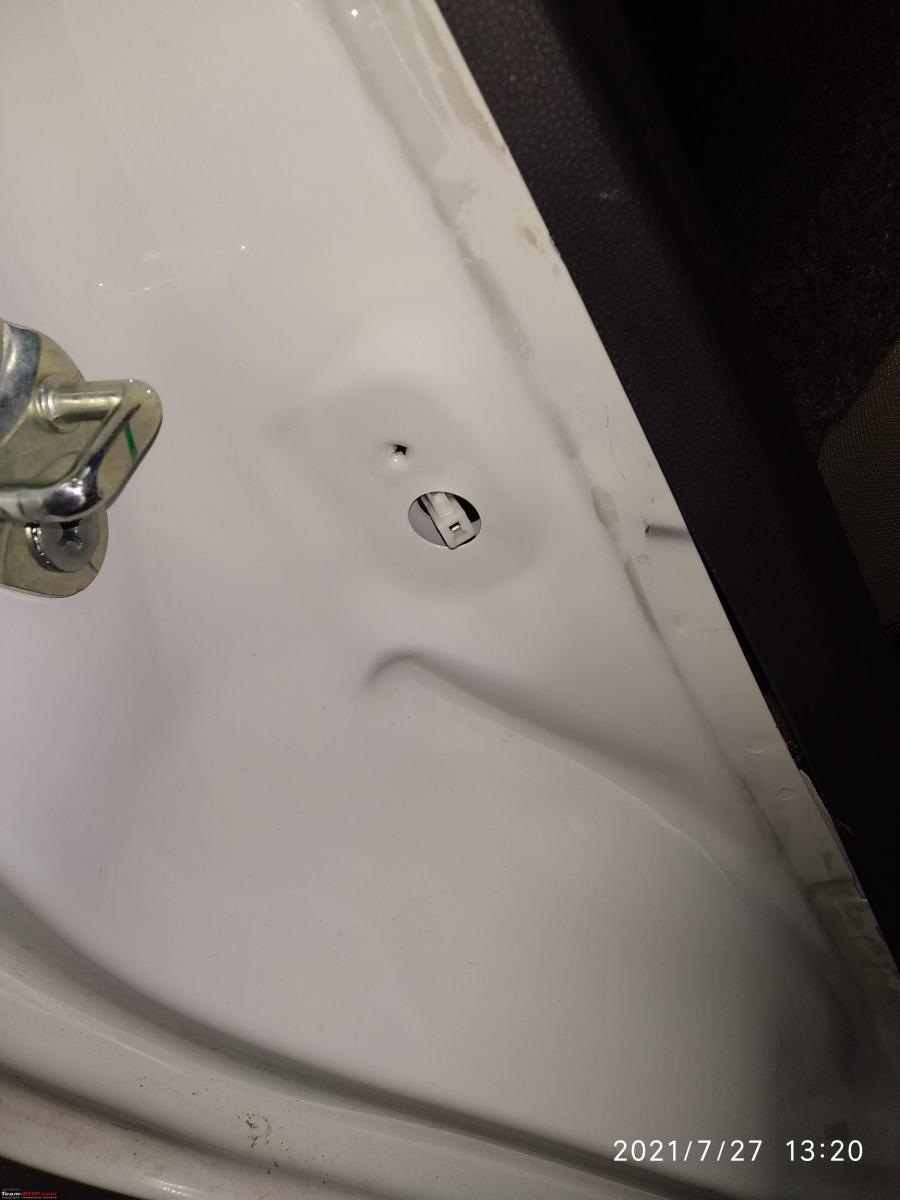
Connect the coupler to the switch
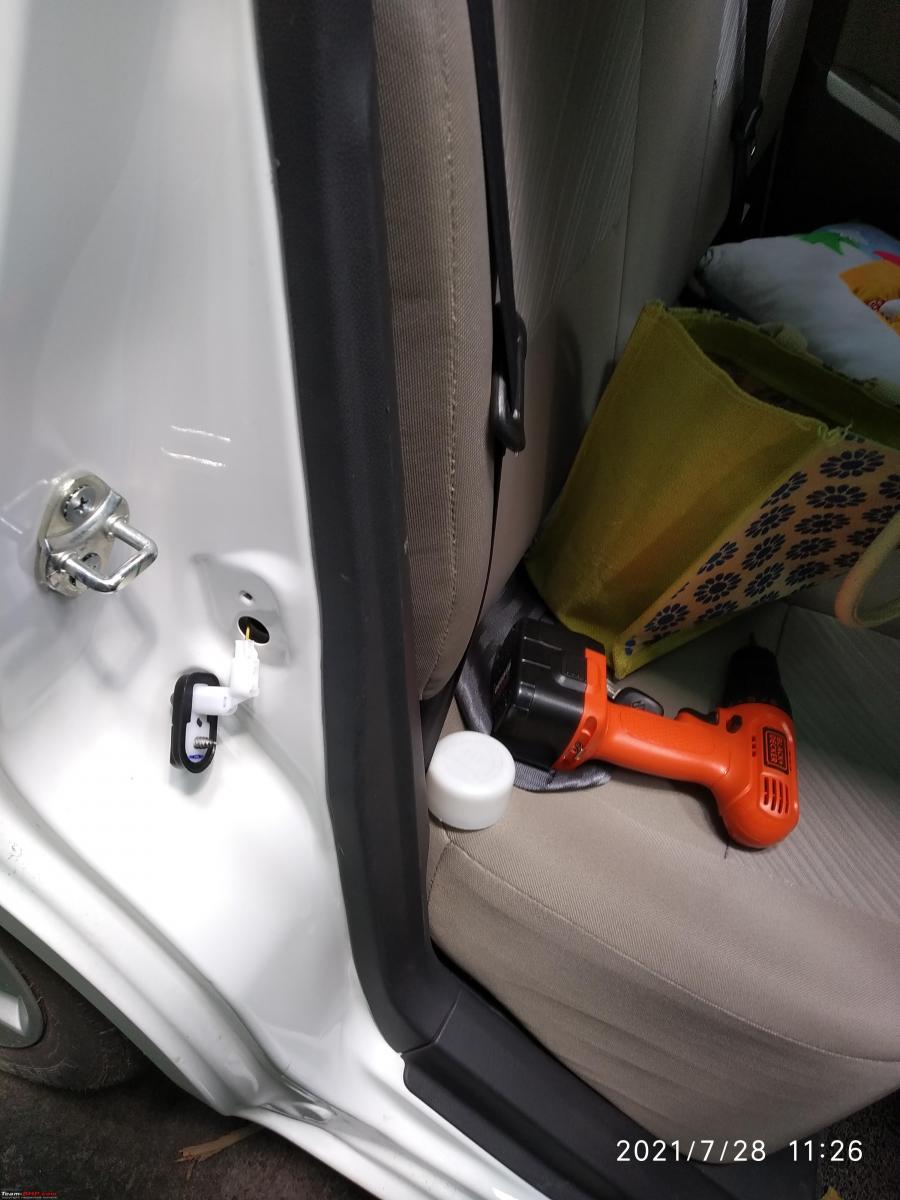
Push the switch's back-side into the hole safely & fit it in place securely with a self-threading screw.
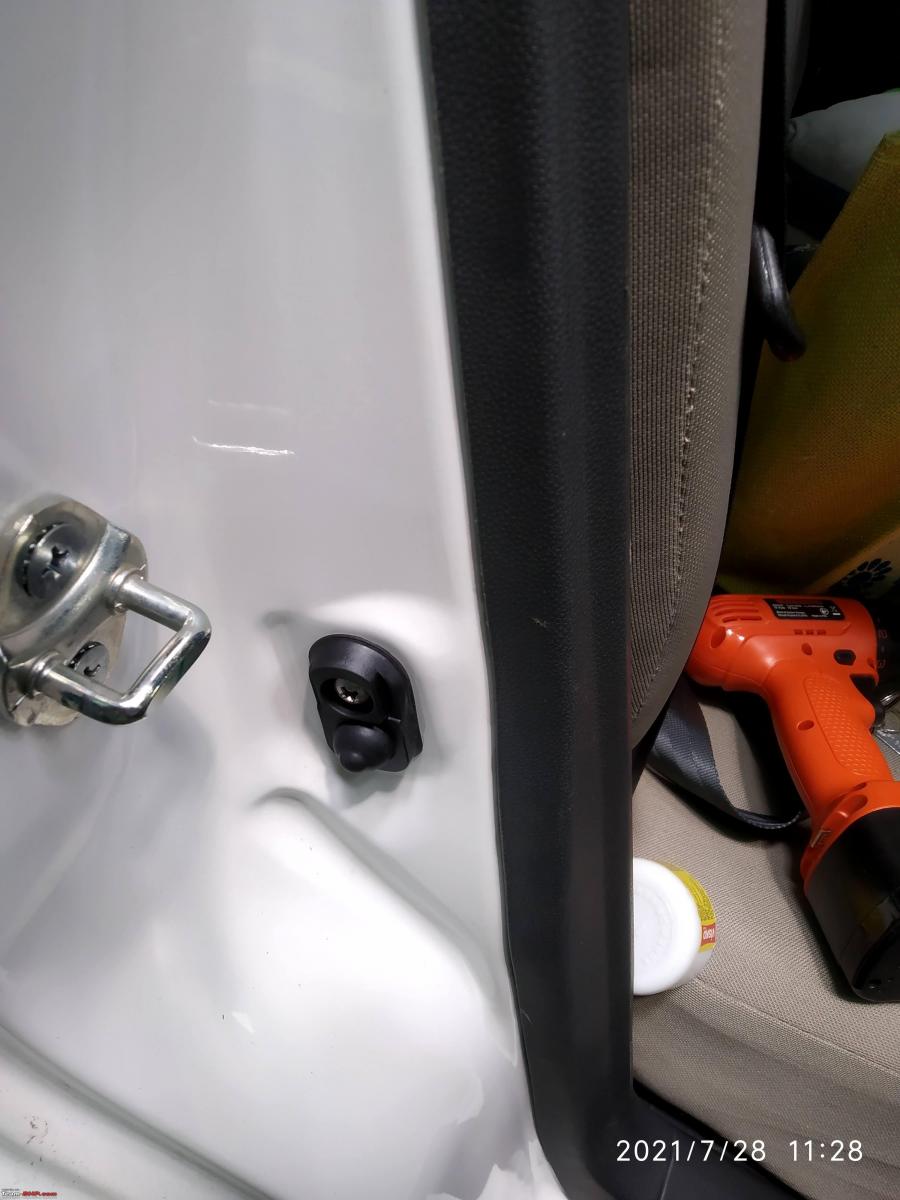
Repeat the same process on LHS.
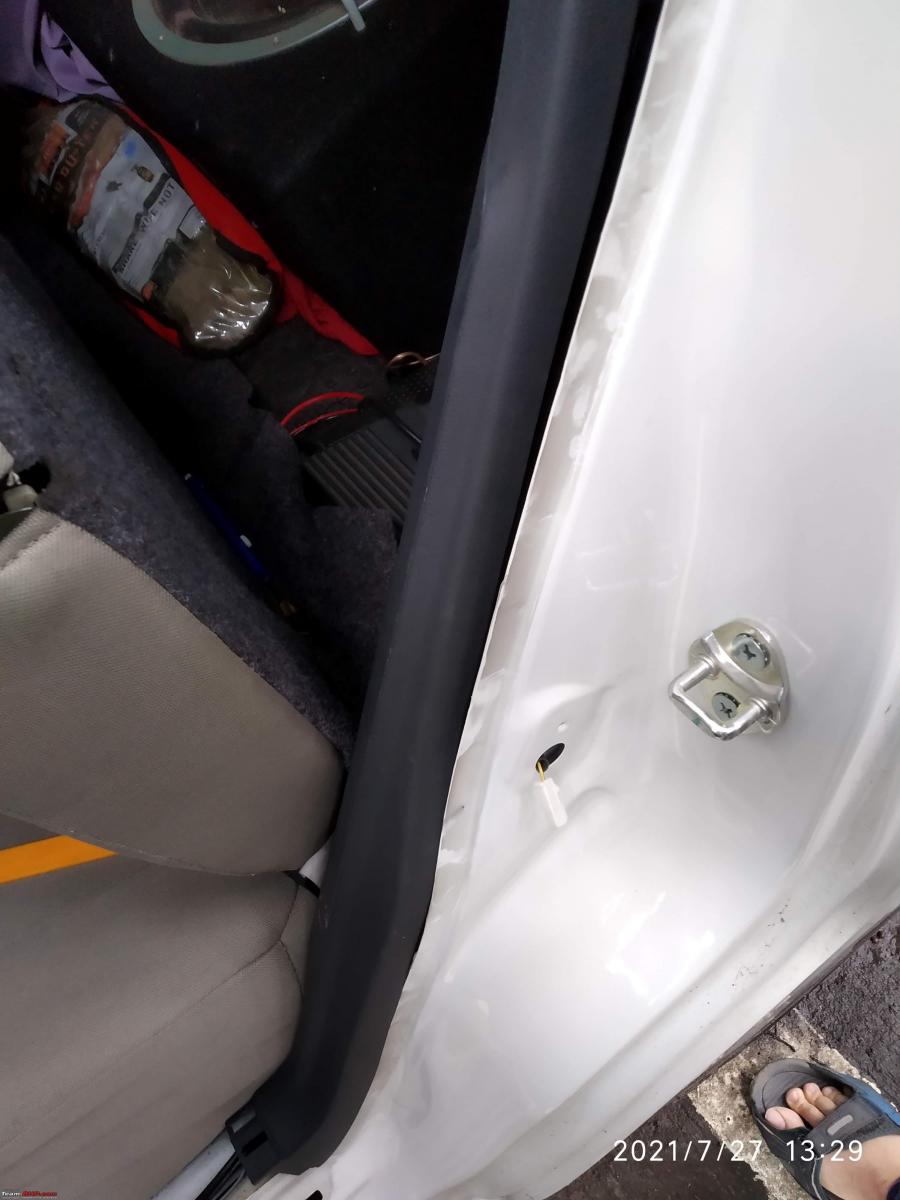
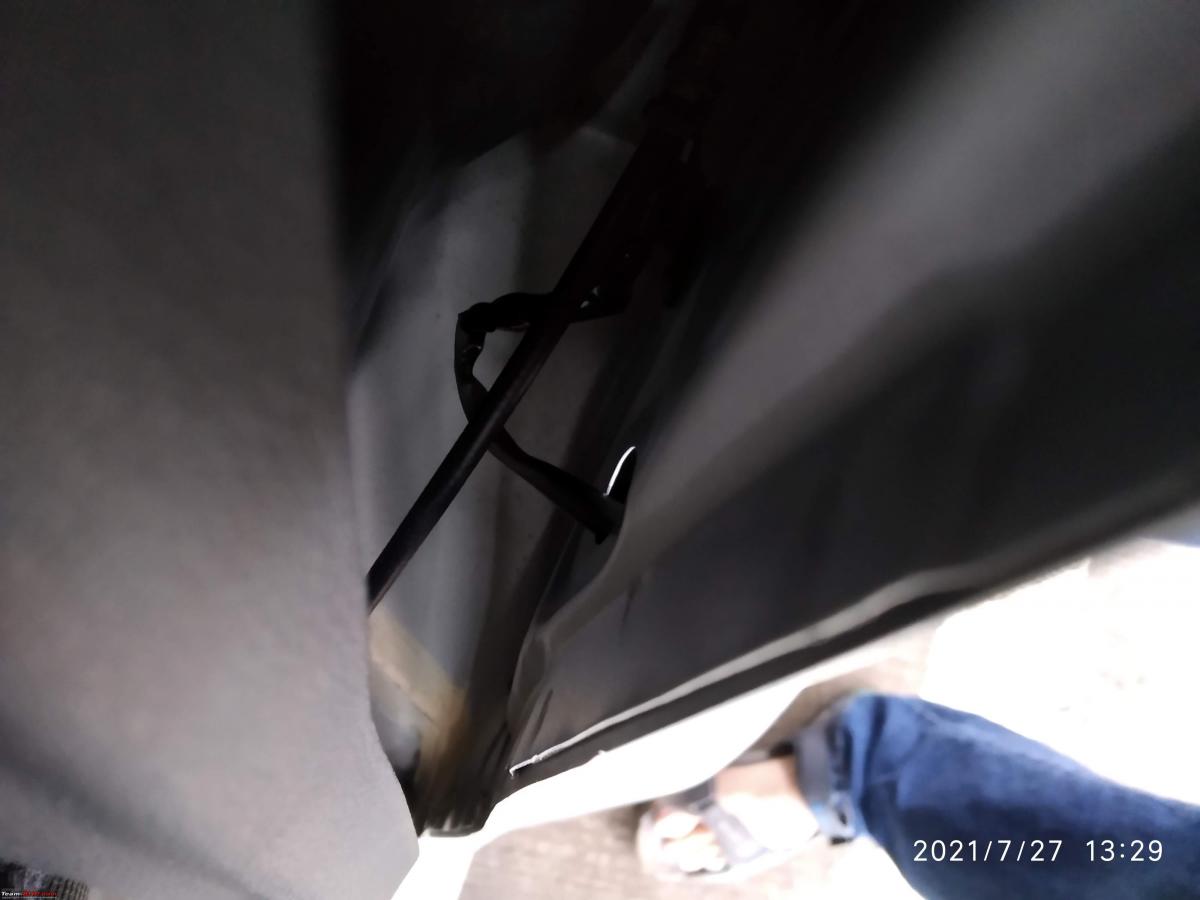
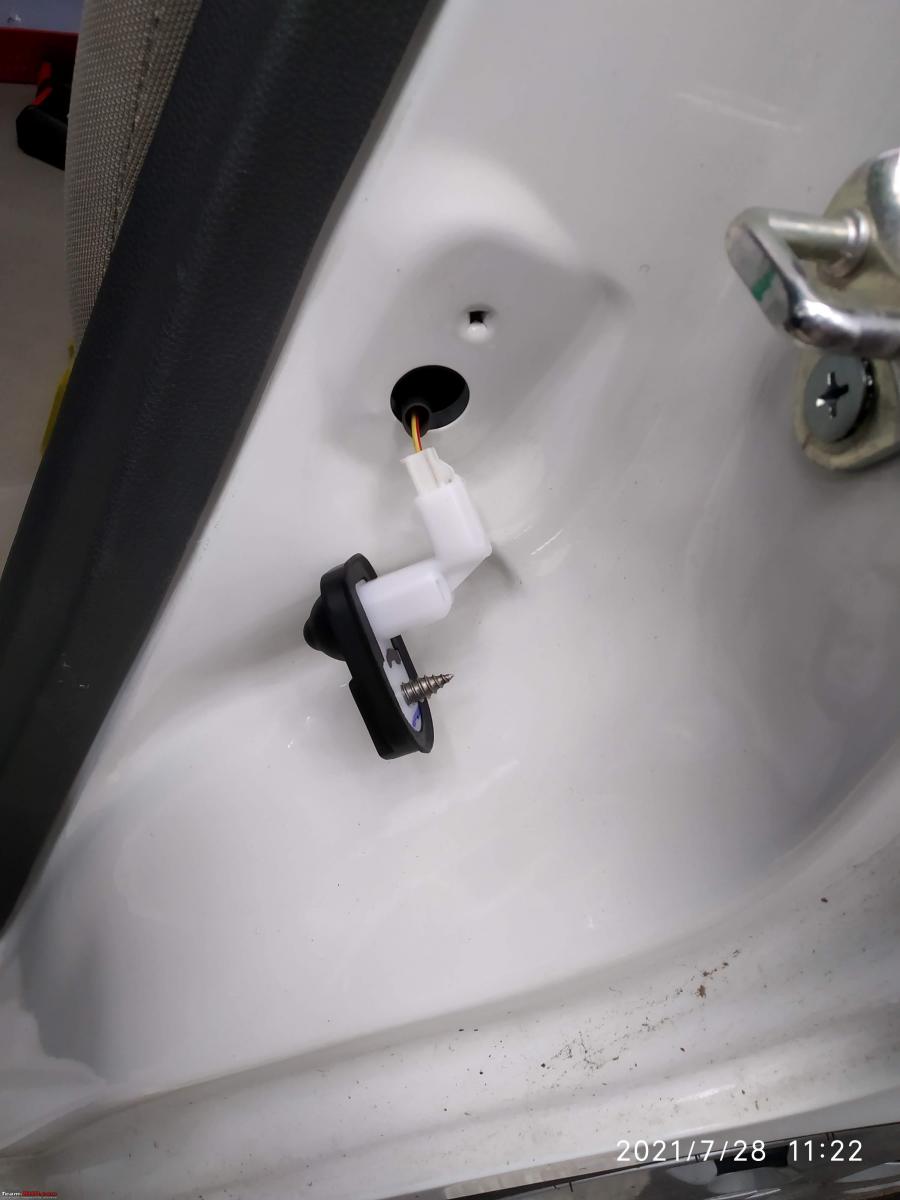
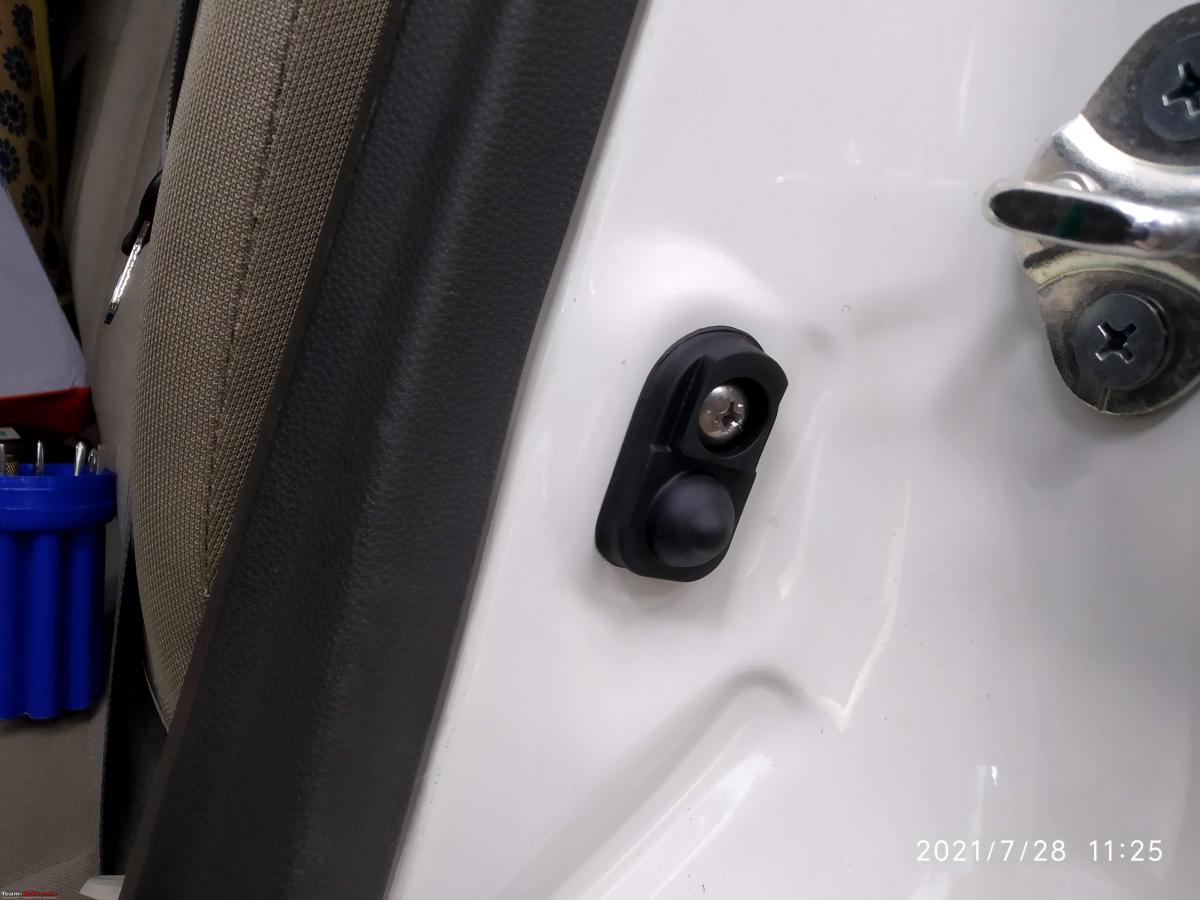
Test that things are working as expected by checking the roof lamp coupled with door opening & closing.
Gently pull-back the removed body panels into place. Take care not to hurt yourself - the panels as well as the metal edges are quite sharp!
Install the foot-well side panel back into place.
And we are done! About INR 200 & 20 minutes - spent well. I was attending a rather drab workshop on phone with BT headset while I implemented most of this.
Check out BHPian comments for more insights and information.
- Tags:
- Indian
- Maruti Suzuki
- Member Content
- Alto
- DIY



















